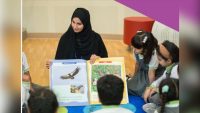As lives and learning go online, children are increasingly making inroads into the magical world of the internet, with its wonders, mysteries, opportunities and lurking dangers. The risks as well as the rewards are clear and present.
Safety guidelines are crucial for children navigating the online world. Required life skills for children now include knowledge of how to navigate the online forest, collect the fruit of information from legitimate tree sites, stay clear of the dark shady paths and while chatting with friends or playing online games, and making sure they give no personal information to authentic seeming charming strangers who may even pose as children themselves.
While some measures can be implemented by the adults in the child’s life, it is crucial that youngsters are given the skills to manage their online lives and also be aware of the online dangers. This is very similar to how children are taught real world skills on how to cross the road or how not to talk to strangers.
Teachers Need to be Aware of the Risks Faced by Children Going Online
Learn: Teachers as well as parents now need to educate themselves about online risks and the trends that children are following. Adults now require to be trained in online safety measures, be aware of what children are doing in their screen time and whom they interact with.
Monitor: Any smart device, any device connected to the internet, such as a child’s phone and its camera, can be hacked. All such devices should be placed and charged in common areas (not private rooms) and safety controls installed. It is important safety measures and school controls are incorporated into the school’s technology.
Ensure safe reporting systems: Children should have advice centers or a system through which they can safely and comfortably give feedback, ask questions and report or talk about issues they face or online situations they are entangled in. Ensure and enforce a clear anti-cyber-bullying policy.
Educate: Children need to be educated on online safety, much the way they need to learn about safety in the offline world. They should know of the risks of downloading links and pictures from unknown or illegitimate sources, and that file sharing involves the risk of viruses and spyware. In addition, they should know the rules of online communication.
Breadcrumbs and Broomsticks
In the online forest, children need to:
Be careful of how they communicate: Avoiding the use of ‘shouting’ all caps in their text, avoiding rude language, using the ‘do others as you would have done unto you’ principle, so that they avoid cyber bullying tendencies and also avoid or report any instances of cyber bullying themselves. While they should avoid responding to aggressive, hurtful or obscene messages, they can report what makes them uncomfortable to a responsible adult.
Be careful of what they communicate: Information posted online regarding themselves, their location, phone number, parents’ details or personal photos can be accessed and misused by criminals online.
Be careful of whom they communicate to: Strangers and fraudsters can pose as friends or children on gaming sites and in chats. Children should never plan a face-to-face meeting with an online playmate or friend. What information an online contact gives a child may not be true.
In short, as denizens of the digital world, children too need to be conscious of their digital footprint. A revealing, hurtful, damaging, or embarrassing post may be seen by many more people than the intended recipient and can remain in cyberspace long after the post has been deleted. This has ramifications not just in the present, but also potentially for their future.
Once children acquire the basics of how to navigate cyberspace, they can step out with confidence, and a little care, into the brave new world.








